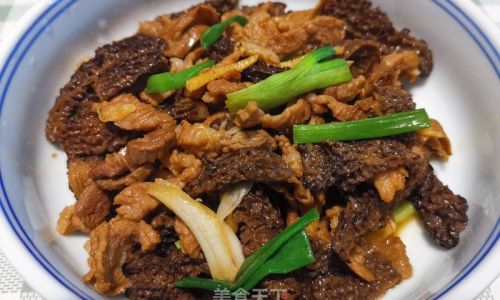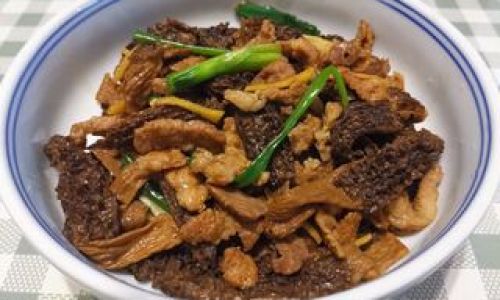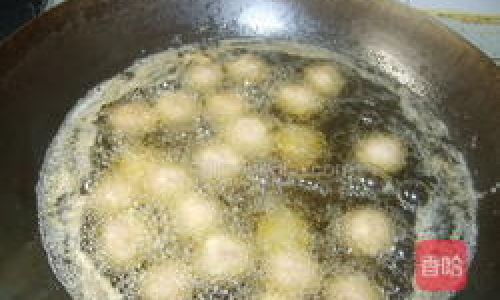Introduction
Stir-fried morel mushrooms, a dish that marries earthy umami flavors with textural contrast, are a testament to the culinary alchemy possible in a wok. Morel mushrooms (Morchella), prized for their honeycomb-like caps and delicate, nutty taste, are a seasonal delicacy that demand respect in the kitchen. When paired with the high-heat, quick-cooking technique of stir-frying, they transform into a dish that is both elegant and deeply satisfying. This article will guide you through the process of creating restaurant-quality stir-fried morel mushrooms at home, from selecting the finest specimens to mastering the nuances of seasoning and presentation. Whether you are a seasoned home cook or a curious novice, this guide will equip you with the knowledge to elevate your stir-fry game.
Understanding Morel Mushrooms
Before diving into the recipe, it is essential to appreciate the uniqueness of morel mushrooms. Unlike their cultivated counterparts, morels are foraged wild, typically appearing in springtime in temperate regions. Their meaty texture and smoky, woodsy flavor make them a sought-after ingredient in gourmet cuisine. However, their porous structure and natural debris require meticulous cleaning to avoid gritty textures. Fresh morels should feel firm, not slimy, and emit a mild, earthy aroma. Dried morels, while convenient, require rehydration and may lack the vibrant flavor of fresh ones. For this recipe, fresh morels are recommended to achieve the dish’s full potential.
Ingredients: Building Flavor Layers
The beauty of stir-fried morel mushrooms lies in their adaptability. While the star is undeniably the mushroom, the supporting cast of ingredients elevates the dish. Here’s a breakdown of essential components:

- Morel Mushrooms (300g): Cleaned and halved lengthwise.
- Aromatics: Minced garlic (3 cloves), thinly sliced ginger (1 tbsp), and finely chopped shallots (2 tbsp) form the flavor base.
- Protein (Optional): Thinly sliced chicken breast (150g), beef tenderloin, or firm tofu for a vegetarian twist.
- Vegetables: Bell peppers (1 medium, julienned), asparagus spears (100g, trimmed), or snap peas add color and crunch.
- Seasonings: Soy sauce (2 tbsp), oyster sauce (1 tbsp), Shaoxing wine (1 tbsp), and a pinch of white pepper.
- Finishing Touches: Sesame oil (1 tsp), sliced green onions, and toasted sesame seeds for garnish.
Equipment: The Wok’s Role
A carbon-steel wok is ideal for stir-frying, as it retains and distributes heat efficiently, creating the coveted wok hei (breath of the wok)—a smoky aroma that defines authentic stir-fries. If unavailable, a large skillet with sloped sides will suffice. Ensure your wok is seasoned to prevent sticking and equipped with a sturdy spatula for tossing ingredients.
Step-by-Step Cooking Process
Preparing the Morels
Cleaning morels is a ritual that demands patience. Fill a basin with cool water, add a pinch of salt, and gently agitate the mushrooms to dislodge dirt. Avoid soaking, as morels absorb water like sponges, which can dilute their flavor. Rinse under cold running water, pat dry with paper towels, and halve lengthwise. For larger specimens, quarter them to ensure even cooking.
Marinating the Protein (If Using)
If incorporating meat or tofu, marinate it briefly to enhance tenderness and flavor. Toss slices in a mixture of soy sauce (1 tbsp), cornstarch (1 tsp), and a drizzle of sesame oil. Let rest for 15 minutes while preparing other ingredients.
Preheating the Wok
Heat the wok over high heat until a drop of water evaporates instantly. Add 2 tbsp of neutral oil (peanut or vegetable) and swirl to coat the surface. Proper preheating is critical to prevent sticking and achieve searing.
Stir-Frying Aromatics
Add garlic, ginger, and shallots to the wok. Stir-fry for 30 seconds until fragrant but not browned. The goal is to release their essential oils without burning, which would impart bitterness.
Searing the Morels
Increase the heat to maximum and add the morels in a single layer. Allow them to sear undisturbed for 1-2 minutes to develop caramelization. Toss gently and cook for another 2 minutes until tender. Morels release moisture as they cook; resist the urge to overcrowd the wok, as this steams rather than sears.
Introducing Protein and Vegetables
Push the morels to one side of the wok and add the marinated protein to the cleared space. Sear for 1 minute per side until golden. Toss to combine, then add vegetables. Stir-fry for 2-3 minutes until vegetables are crisp-tender.
Deglazing and Seasoning
Deglaze the wok with Shaoxing wine, scraping up any caramelized bits (fond) from the bottom. Add soy sauce, oyster sauce, and a splash of water or stock (2 tbsp). Toss to coat evenly, ensuring the mushrooms and protein are glazed but not swimming in liquid.

Finishing with Aromatics
Drizzle sesame oil over the dish and toss once more. Remove from heat and garnish with sliced green onions and sesame seeds. The residual heat will meld the flavors without overcooking.
Serving Suggestions
Stir-fried morel mushrooms shine when paired with steamed jasmine rice, which absorbs the savory sauce beautifully. For a heartier meal, serve alongside chilled soba noodles or nestled in lettuce cups for a low-carb option. Elevate the presentation with a sprinkle of microgreens or a wedge of lime for acidity.
Troubleshooting Common Pitfalls
- Soggy Mushrooms: Overcrowding the wok traps steam, leading to mushiness. Cook in batches if necessary.
- Bland Flavor: Morels benefit from bold seasoning. Amplify umami with a dash of fish sauce or a sprinkle of mushroom powder.
- Burnt Aromatics: Keep a close eye on garlic and ginger; they burn quickly. Have all ingredients prepped and within arm’s reach.
Variations and Customization
- Spicy Kick: Add dried chili flakes or a sliced Fresno pepper during stir-frying.
- Vegetarian Delight: Substitute protein with crispy fried tofu or tempeh and enhance umami with a splash of vegan oyster sauce.
- Herb-Infused: Tear fresh basil or cilantro leaves into the dish just before serving for a fragrant finish.
The Science Behind Stir-Frying
Stir-frying is a high-heat, rapid-cooking method that preserves texture and nutrients. The Maillard reaction—a chemical process between amino acids and sugars—occurs at temperatures above 300°F (150°C), creating the golden-brown caramelization that defines flavor complexity. Morels, with their low moisture content, are ideal candidates for this technique, as they sear rather than steam.
Storing and Reheating Leftovers
Leftovers can be stored in an airtight container for up to 3 days. Reheat gently in a wok over medium heat, adding a splash of water to prevent drying. Avoid microwaving, as it can render the mushrooms rubbery.
Cultural Significance of Morel Mushrooms
In French cuisine, morels are celebrated in classics like veau à la morelle (veal with morel sauce). Their rarity and fleeting season have inspired festivals in Europe, where foragers and chefs gather to honor this culinary treasure. In traditional Chinese medicine, morels are believed to invigorate the spleen and boost qi, reflecting their historical reverence.
Conclusion
Stir-fried morel mushrooms are a celebration of simplicity and sophistication. By mastering the interplay of heat, seasoning, and technique, you unlock a dish that delights the senses and honors the mushroom’s prized status. Whether you’re a purist savoring their earthy essence or a culinary adventurer experimenting with global flavors, this recipe invites you to explore the endless possibilities of the wok. So, heat your pan, gather your ingredients, and embark on a journey to stir-fry perfection—one that begins and ends with the humble yet extraordinary morel mushroom.






0 comments